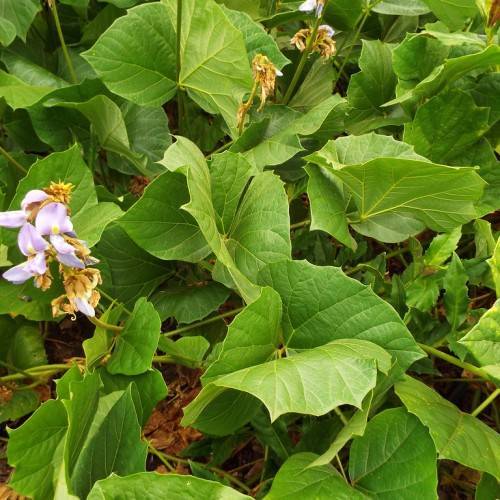
jicama
Pachyrhizus erosus
Cycle:
Perennial
Watering:
Average
Hardiness Zone:
10 - 12
Flowers:
Flowers
Sun:
Full sun
Growth Rate:
Low
Maintenance:
Low
Drought Tolerant:
Yes
Salt Tolerant:
Yes
Care Level:
Medium
watering
Jicama (Pachyrhizus erosus) plants should be watered about twice a week in the summer, and once a week during the winter. Water the soil until it is moist, but not soggy. The amount of water needed will depend on the soil type – sandy soil will need more water than clay soil. To ensure proper hydration, water until the excess runs out of the bottom of the pot or planting area. Check the soil moisture periodically and adjust accordingly.
sunlight
Jicama (Pachyrhizus erosus) is an herbaceous plant species native to Mexico and Central America. It requires moderate to full sunlight to promote proper growth. Jicama should receive at least 6 hours of direct sunlight a day and will benefit from even more exposure. In the summer months, when the temperature is higher and days are longer, up to 12 hours of direct sunlight may be beneficial. It is best to provide jicama with some light shade in extreme heat conditions and to ensure that it is not receiving any direct sunlight during the hottest part of the day, such as the afternoon.
pruning
Jicama (Pachyrhizus erosus) typically does not require extensive pruning. For best results, pruning should be done early in the season after the plant has sprouted leaves and buds first appear. At this stage, any dead or diseased foliage should be removed, as well as any branches or stems that are overgrown and tangling with other branches. Additionally, removing any crossing branches may also help to promote better air circulation within the plant, encouraging more optimal growth and fewer disease issues. If desired, jicama can also be lightly trimmed to decrease the size of the plant or adjust its shape. Overall, the goal of pruning should be to achieve a balance between good air circulation and preserving the natural shape of the plant.
